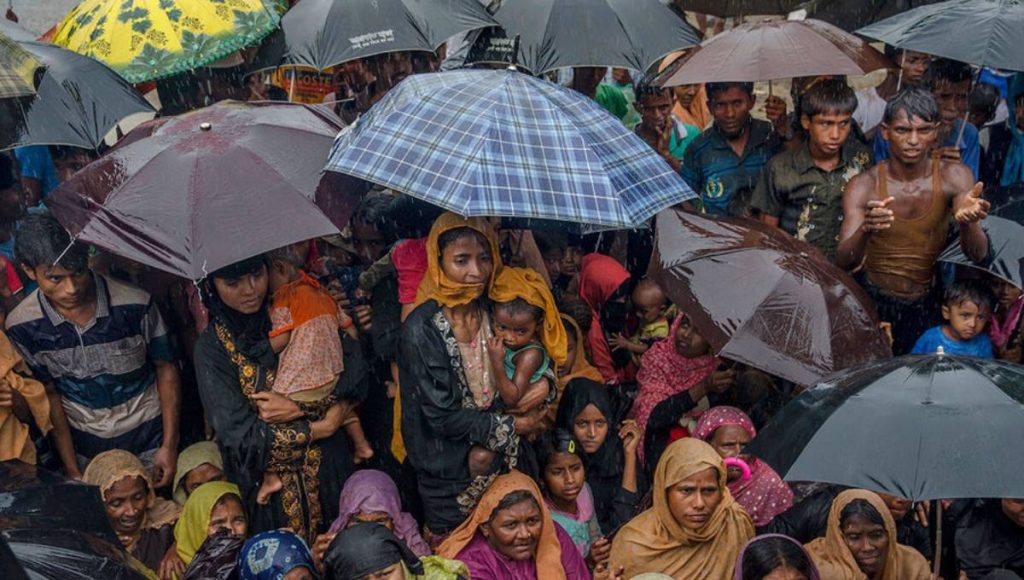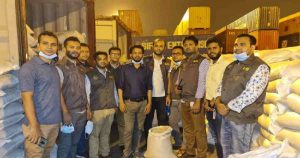Dhaka, Feb 11 (UNB): The Rohingyas, now living in Bhasan Char, want to see a peaceful environment in Myanmar with the restoration of their basic rights for their early return despite what they say having a far better place than the congested camps in Cox’s Bazar.
“We’re living here (Bhasan Char) happily and peacefully. We’re very happy with the facilities we’ve got here. But we want to return to Myanmar,” Fayez, a 28-year-old Rohingya man, told UNB.
He said he has just opened a shop in Bhasan Char that offers tea and snacks and is hopeful of earning a little bit of money through the daily sales.
Fayez is one of the over 7,000 Rohingyas who willingly have got shifted to Bhasan Char in search of a better place, including safety and security.
“I’m here with my wife, three children and my mother-in-law,” said the young Rohingya man who entered Bangladesh in 2017 amid military crackdowns in Rakhine State.
He said they are receiving 10 kilograms of rice per head every month apart from potatoes, sugar, edible oil, salt and other essentials.
The numerous challenges associated with the temporary hosting of persecuted Rohingyas from Myanmar have compelled the government of Bangladesh to plan the relocation of 100,000 Rohingyas to Bhasan Char, Bangladesh says.
Accordingly, 1642 Rohingyas were relocated to Bhasan Char on December 4 and the second batch, comprising 1804 Rohingyas, had been transferred from Cox’s Bazar to Bhasan Char in December 29 last year.
“We’re, in fact, waiting for return to our own place in Myanmar. We seek justice. We want to get back our basic rights what we deserve. We’re ready to return home but we’re living in Bhasan Char happily so far as we spent two months here,” said Rafikul, another Rohingya man standing in front of a big playground made for kids.
He said those who are being arrested in Myanmar should be released to restore peace in his homeland as their target is to return to home with all their rights back in place.
Rafikul’s parents and sisters are still in a Cox’s Bazar camp as they want to take more time to decide while the number of interested Rohingyas to come to Bhasan Char is growing.
“The number of children among those who are already here in Bhasan Char is high, especially the four-fourteen year age group. Probably, Rohingyas in Cox’s Bazar camps got the information about infrastructure, facilities for informal education and other issues that encouraged them to come here,” Commodore Abdullah Al Mamun Chowdhury, project director of the Ashrayan-3 Project (Bhasan Char project), told UNB.
Referring to his discussions with the Refugee, Relief and Repatriation Commissioner, he said they are more Rohingyas who are willing to come as the next batch will be relocated soon. The last relocation took place on January 28-29.
Responding to a question, Commodore Mamun said there were initially 22 NGOs but currently over 40 are operating in Bhasan Char.
Talking to UNB, Amena Khatun, a ten-year-old girl, said she came with her parents and she has two sisters and three brothers who are all in Bhasan Char.
“I’m running a small betel leaf shop. My sales volume is more or less Tk 200-300. It gives me a tiny income every day,” she said adding that they are waiting to return to their home in Rakhine.
During the visit, Rohingya children were seen playing in big numbers in an adjacent playground and mini-children park.
For Bhasan Char, the government says, much better infrastructures have been put in place involving renowned international companies.
The British firm HR Wallingford was involved in the stability survey of the island. In fact, the island was developed as per their recommendation and design.
The flood and shore protection measures with a 12.1-km long and sufficiently higher embankment, designed by the HR Wallingford, secures the island from massive tidal waves and cyclones, according to the Ministry of Foreign Affairs (MoFA).
This is supplemented by the installation of modern hydrographic monitoring and warning system that can provide early warning on any natural hazards and enable prior evacuation, officials said.
The efficacy and strength of the infrastructures of Bhasan Char and its disaster protection measures have been tested during the deadly cyclone AMPHAN, the MoFA says.
To address any extreme situation, there are arrangements for evacuation in a timely manner as per the government’s disaster response management framework.
Bangladesh and Myanmar signed the repatriation deal on November 23, 2017. On January 16, 2018, Bangladesh and Myanmar signed a document on ‘Physical Arrangement’, which was supposed to facilitate the return of Rohingyas to their homeland.
Bangladesh says the Rohingyas do not trust their government, and Bangladesh gave a number of proposals to build trust among them.
Bangladesh is trying in multiple ways — bilaterally, multilaterally, tri-laterally and through the judicial system — to find a lasting solution to the Rohingya crisis.
Bangladesh proposed deployment of nonmilitary civilian observers from Myanmar’s friendly countries — Japan, China, Russia, India and Asean countries.




